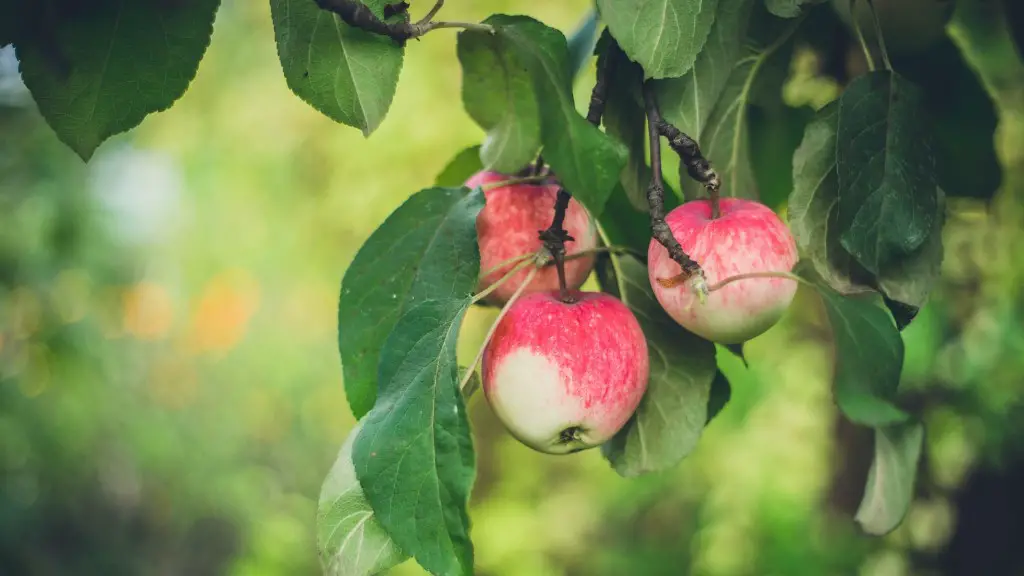How to Prune a Windmill Palm Tree
Maintaining a windmill palm tree can provide a great and unique atmosphere to any home or leisure space. Pruning a windmill palm is a simple chore, but it is important that the task is done with care and consideration for the health of the tree. This article will cover the essential steps for successful pruning of a windmill palm.
The first step in pruning a windmill palm is to remove any dead or diseased fronds. This should be done with a pair of pruning shears or a sharp garden knife. It is important to be thorough in this process so as not to leave any diseased fronds. Similarly, any fronds that look to have outlived their usefulness should be removed, as they will be sapping energy and resources from the tree. It is important to note that the shorter stems within the canopy should not be removed, as these are the key source of new fronds.
Carefully step back and assess the shape of the canopy of the windmill palm. To maintain the graceful shape and character of the tree, the fronds should be trimmed in a gradual, tapered fashion from the base of the stem outward and up. Select the longest frond in each clump to be the first to be trimmed, and ensure it is trimmed at an even length of about 2-4 inches. The next frond should be slightly shorter, and then shorter again until the fronds are level with the top of the tree. Be aware that this process should be done with care and attention, as trimming too much or too little can leave an unaesthetic shape.
Another important step when pruning a windmill palm is to regularly clear away any deadstems, as well as unwanted seedlings that may be growing in the area beneath the tree. Removal of these elements will improve the overall look and health of the tree, as well as keeping the area clear and healthy. It is important to remember to only remove deadstems and seedlings, and never the actively growing fronds.
Maintenance Tips
To keep a windmill palm looking its best, regular maintenance should be carried out. During the growing season, the fronds should be regularly trimmed to keep the shape of the tree intact. Additionally, any fronds on the lower part of the trunk should be removed, so as not to impede the growth of new fronds.
Removing any dead or diseased fronds as soon as they are identified is very important in minimizing any damage to the tree and preserving its health. Similarly, any leftover debris or seed should be cleared away, so as not to encourage the growth of any new invasives.
In order to keep the windmill palm in tip top condition, the soil should be regularly checked for fertility, moisture levels and pH. Any issues can be quickly rectified by applying fertilizer or pruning the roots. Additionally, careful monitoring for pests or diseases should be carried out to prevent any further problems.
Tips when Cutting
The main points to consider when pruning a windmill palm are as follows: only cut the fronds from the very top of the tree and only at a point that is not visibly connected; avoid cutting the short stems, which are the key source of new fronds; and aim to have the final prune create a tapered, round shape overall.
Always use sharp tools when pruning a windmill palm, as this will lead to a cleaner cut, and minimise damage to the fronds. Disinfect the blades with bleach or another cleansing agent before and after each prune. Make sure to wear protective clothing while cutting too; wearing gloves, long sleeves and trousers can minimise any nicks and cuts.
Overview of Benefits
Pruning a windmill palm provides a number of benefits for the tree, for the environment and for the individual performing the task. Pruning can improve the airflow and light into the canopy of the tree, as well as the overall shape and appearance of the tree. Pruning can also reduce the growth rate of the tree and ensure resources are shared evenly amongst the fronds.
Pruning can also benefit the environment, by removing any dead and diseased vegetation, as well as potential invasives. In addition, by monitoring for pests and diseases, any outbreaks can quickly be contained, limiting any potential damage to the environment.
Finally, pruning a windmill palm can be beneficial for the person performing the task, as it can be therapeutic and enjoyable. Not only that, by regularly pruning the tree, it will always look its best, providing a great atmosphere and an aesthetically pleasing space.
Iconic Windmill Palms
The windmill palm is quickly becoming an iconic species. With its tall, slender trunk and its distinctive fan-shaped fronds it is no surprise that this species is increasingly popular in landscaping and garden design. From public parks and botanical gardens, to residential gardens and beyond, the windmill palm is an increasingly popular species.
The popularity of the windmill palm does not just stop with its looks; this species can be exceptionally hardy when in the right conditions. This means that individuals do not have to be an expert gardener in order to grow and care for a windmill palm. Not only that, with regular pruning, this tree can be kept in a well-manicured shape, greatly enhancing the look of any garden.
The windmill palm is a species that will truly stand the test of time; it is almost guaranteed to remain popular and provide a great atmosphere to any outdoor space.
Conclusion
Caring for and pruning a windmill palm is not a difficult task. By following this article’s simple instructions and regular maintenance, the tree can remain healthy and look outstanding. Furthermore, with the addition of some iconic windmill palms, any outdoor space can be quickly and easily enhanced, providing a great atmosphere.



